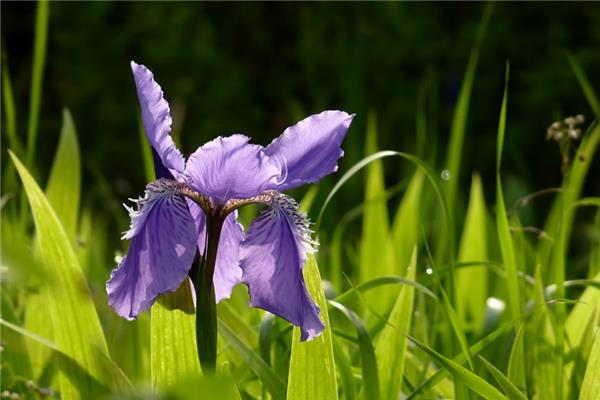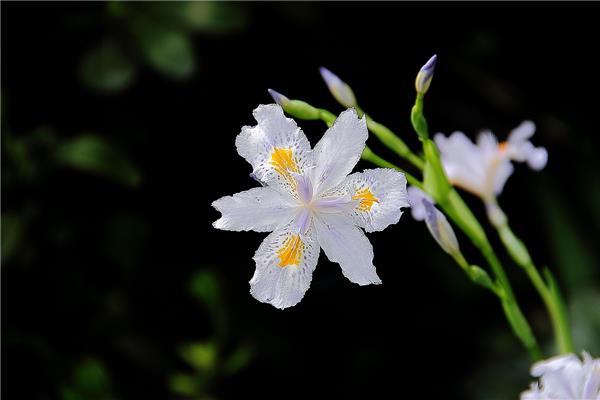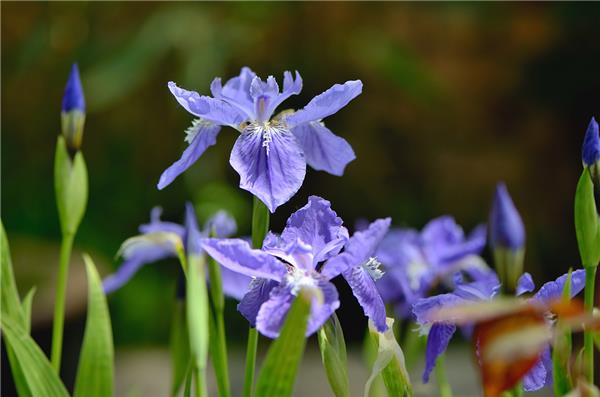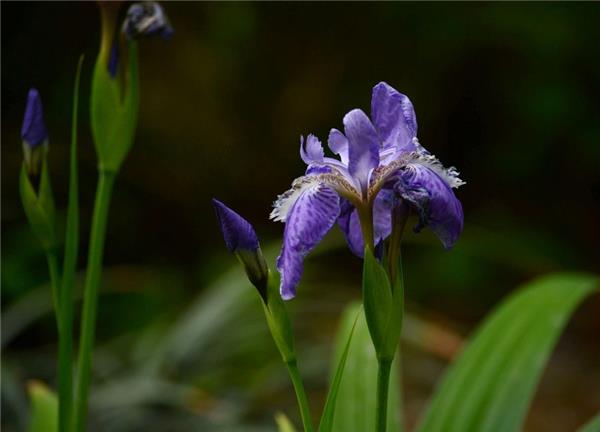Iris is the embodiment of a beautiful rainbow in Greek mythology.
Iris is a very beautiful flower. It appeared in Greek mythology a long time ago. It is said that it is the embodiment of the rainbow goddess in Greek mythology, and it is also said that it was brought down to earth by the rainbow goddess. In short, each version is very romantic.

The legend of Iris grass
The Legend of Iris
The generic name of iris means "rainbow" in Greek, so Iris has a transliteration of the common name "Alice". Alice is the rainbow goddess in Greek mythology, she is the messenger of gods and mortals. The Greeks called the iris a rainbow flower because it was as beautiful as a rainbow in the sky.
Legend of Iris II
The legend of irises in Southeast Asia is like a fairy tale. Millions of years ago, irises were found only in tropical forests. They were so beautiful that not only birds, beasts and bees loved them, but also the breeze and running water had to stop to enjoy them. Israelis generally believe that yellow iris is a symbol of "gold", so there is a custom of planting irises, hoping to bring wealth.
Legends of Iris III
The flower consists of a capsule of 6 petal-shaped leaves, 3 or 6 stamens and an ovary surrounded by pedicels. The name of this plant comes from the messenger of God and the rainbow that connects the earth to other worlds. Legend has it that the rainbow saved the life of King Frank in the 6th century. When he saw the rainbow rising from the Rhine, he knew that the river was shallow enough, so he crossed the river and escaped from the enemy.

2. Culture methods of Iris grass
Reproduction: the cultivation of Iris grass is often combined with reproduction, and the main methods of reproduction are plant division method and sowing method. Ramet is carried out in early spring or late autumn, open field cultivation should first make a planting bed, apply bean cake fertilizer or barnyard manure as base fertilizer.
Soil: a clay soil that is moderately moist, well drained, rich in humus and slightly alkaline.
Planting: during and after planting, the soil temperature should be lower than 20 ℃. There are some risks in planting Iris in summer. Because the yield of Iris is directly dependent on the temperature of the growing period. If the average temperature is expected to be higher than 25 ℃, then the planting plan will have to be cancelled. At this point, planting can only be advanced or postponed.
Watering: watering depends on the situation, watering once a week during the growth period of open field cultivation, and the amount of watering decreases gradually with the decrease of air temperature. it is generally advisable for the soil to be slightly dry, do not make the soil stagnant or too wet for a long time, so as not to cause rotten roots or diseases.

Sunshine: Iris is full of sunlight and slightly shade-resistant. It can be cultivated in open field. Strong adaptability, general normal management will be able to grow vigorously.
Humidity: the ideal relative temperature of Iris grass is about 75%. Pay attention to avoid large changes in humidity or gradual changes in humidity. In warm sunny, shady or humid weather, the relative humidity tends to be higher. Corresponding measures must be taken to reduce humidity through simultaneous heating and ventilation.
Fertilization: base fertilizer can be applied before planting, once a year in autumn, and chemical fertilizer can be applied during the growing period.
Weeding: the growth process of Iris takes only 8 Mel 12 weeks. In such a short growth time, if the soil is over-steamed, flooded, ploughed and so on, there is no need to consider weeding in the process of plant growth. After planting, chemical herbicides are mainly used to remove weeds. But be careful not to cause damage to the plant when using it.
Insect pests: the common diseases of iris are scab, soft rot and so on. At the initial stage of the disease, 25% trimethoprim 400-fold solution can be used to control the disease, and the soft rot can be controlled with Bordeaux solution of 1, 1, 1, 1, and 100. The insect pest has eroded night moth, which can be irrigated with 1200 times solution of trichlorfon.

Relatively speaking, Iris grass is relatively easy to grow. As long as we understand its growth habits and take targeted conservation measures, we can ensure that it blossoms beautifully.
Related
- Wuhan Hospital Iron Tree Blooming Result Was Instantly Frightened by the Gardener Master
- Which variety of camellia is the most fragrant and best? Which one do you like best?
- What is the small blue coat, the breeding methods and matters needing attention of the succulent plant
- Dormancy time and maintenance management of succulent plants during dormancy
- Minas succulent how to raise, Minas succulent plant pictures
- What are the varieties of winter succulent plants
- How to raise succulent plants in twelve rolls? let's take a look at some experience of breeding twelve rolls.
- Attention should be paid to water control for succulent plants during dormant period (winter and summer)
- Watering experience of twelve rolls of succulent plants
- Techniques for fertilizing succulent plants. An article will let you know how to fertilize succulent plants.



